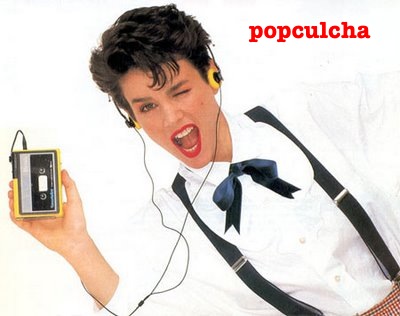Check out this BBC current affairs show, from 1997, which gives a vivid sense of how much sections of the British establishment were nervous about the punk rock scene.
The invaluable
Dangerous Minds posted about it, and has this to say about it:
What the fuck were these people thinking? What were they scared of?
Well, to start with, 1970s Britain was in a mess. It had high
unemployment, 3-day working weeks, nationwide power cuts, tax was at
astronomic levels, food shortages, and strikes were commonplace, and the
Labor government feared a revolution was imminent.
To explain why this all came about, let’s rewind the tape to a mass
demonstration at Grosvenor Square, London, March 1968. This was where an
anti-Vietnam War rally erupted into a massive pitched battle between
protesters and the police. Outside of the American Embassy 200 people
were arrested; 86 were injured; 50 were taken to hospital, half of which
were police officers. The Labor government of the day, were stunned
that a group of protestors could cause such disorder, and near anarchy,
that could have led (they believed) to a mini-revolution on the streets
of London.
In fear of such anarchy ever happening again, the government decided
to take action. At first, ministers considered sending troops out into
the streets. But after some reassuring words from Special Branch, Chief
Inspector Conrad Hepworth Dixon, they were convinced that the boys in
blue could handle any trouble. Dixon was allowed to set up a new police
force: the Special Demonstration Squad.
This was no ordinary police operation, the
SDS
had permission to be literally a law unto itself, where its officers
could operate under deep cover, and infiltrate left-wing, fringe
organizations and youth groups, with the sole purpose of working as
spies and
agents provacteurs. Harold Wilson’s government agreed to pay for this operation directly out of Treasury funds.
The SDS carried on its undercover activities against any organizations that
they
believed threatened Britain’s social order. This include animal rights
organizations, unions, and anti-Nazi, and anti-racism groups. They were
also allegedly involved in the planting incendiary devices at branches
of department store Debenhams in Luton, Harrow and Romford in 1987; and
one member was later involved in writing the pamphlet that led to the
famous “
McLibel” trial of the 1990s.
The workings of the SDS were on a “need to know basis,” and only a
handful of police knew exactly what this little club were up to. But
their presence fueled genuine fears amongst the British Establishment
that there were “Reds under the beds,” and that revolution was a literal
stone’s throw away.
This was all going on behind-the-scenes, while out front, muppets
like the councillors and journalists lined-up on this program, pushed
the hysteria of Punk Rock riots and civil disobedience, that reflected
the very genuine fears at the heart of the UK Establishment. (Note
London councillor Bernard Brook-Partridge mention of “MI5 blacklists.”)
And here's the vid of the show. Essential viewing.








